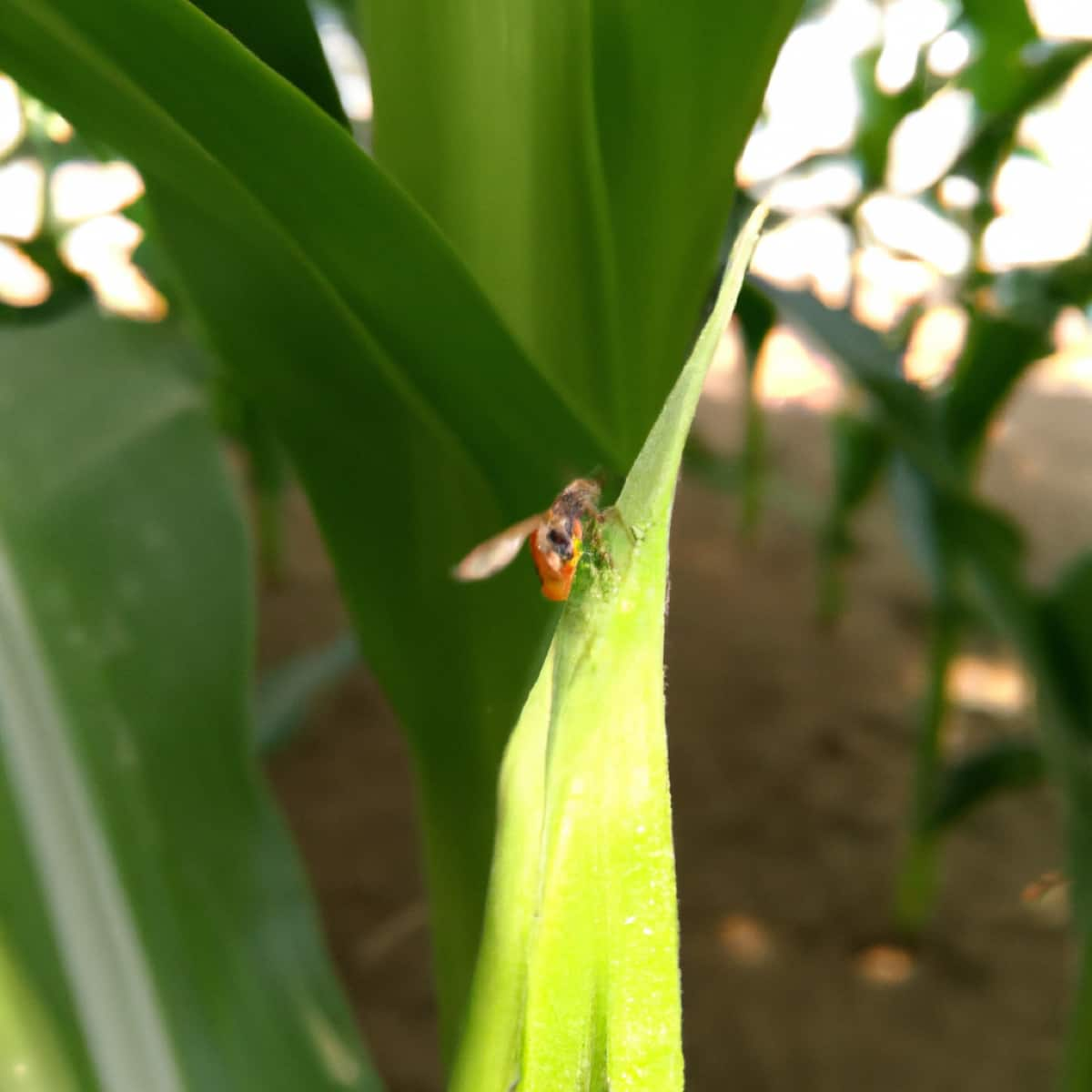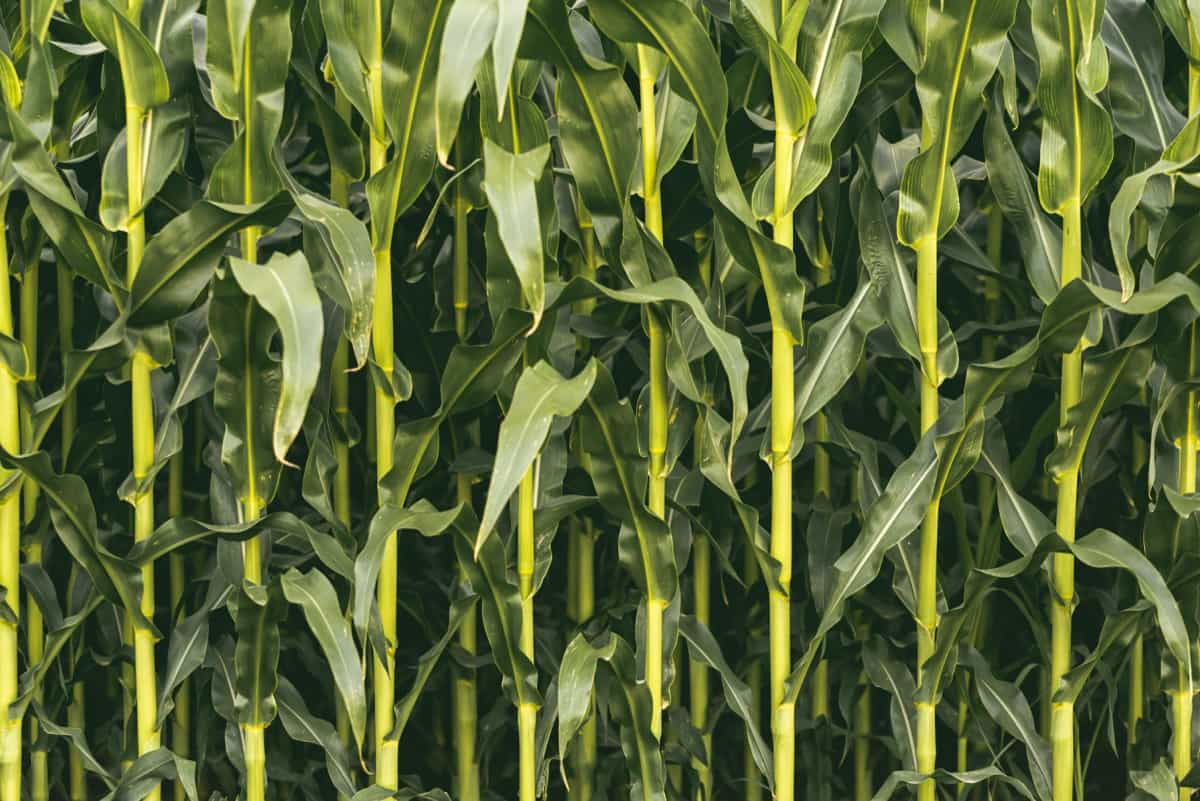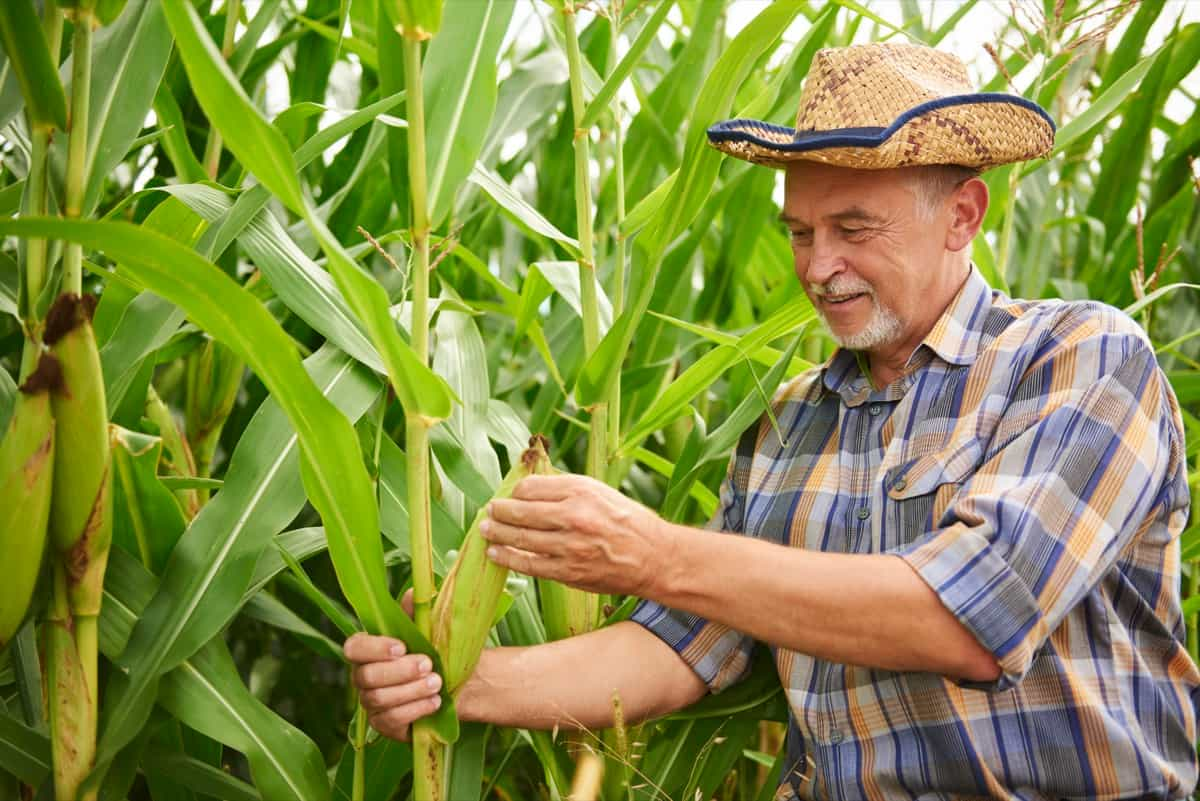The maize shoot fly, also known as the stem fly, is an insect pest that attacks maize (corn) crops. The larvae of the fly feed on the stem and shoots of the plant, causing significant damage and reducing yield. Let’s check out more information on Maize Shoot Fly management below.

Maize (corn) is one of the world’s most important staple crops, providing food and feed for millions of people and livestock. It’s a versatile crop that can be grown in many regions of the world, including South America, North America, Europe, Africa, and Asia. Maize is a valuable crop due to its high yield potential and versatility, with uses ranging from human consumption to livestock feed and biofuel production.
Maize Shoot Fly management
The life cycle of Maize Shoot Fly
- Eggs: A female lays an average of 40 eggs single on the lower surface of the leaves and tender stem.
- The incubation period lasts about 2-3 days.
- Larvae have a larval period of 10 to 12 days. There are four larval instars present.
- Pupa: Stem pupation. The pupal period lasts about a week.
- The average adult lifespan is 12-1 4 days.
- The life cycle takes about 2-3 weeks to complete.
- A year with multiple generations.
- Carryover – The pest spends the winter as an adult on grasses.
Occurrence of Maize Shootfly
- On hatching from the eggs, larvae bore into the central shoots of seedlings and kill the growing point, producing “dead hearts.”
- They eat the decaying cores of shoots. Following the death of the central shoot, the plant produces tillers and develops a bushy appearance.
Identification of Shootfly in Maize field
- The eggs are white. Eggs are laid on the underside of seedling leaves 7 to 8 days old or on young tillers; one to three eggs are laid per leaf. The white eggs are elongated in shape.
- Crawl down inside the sheath base of the young shoot and kills the growing point and the youngest leaf.
- The fully developed (third instar) larvae are 8 to 10mm long and yellowish.
- Puppa usually occurs at the base of a dead shoot but can also occur in the soil.
- The pupal period lasts about seven days.
- Adult flies are about 4mm long. It resembles a tiny housefly.
- The female’s head and thorax are pale greys. The abdomen is yellowish with two brown patches on it. The male is darker in color.
Damage symptoms of Shootfly in Maize field
- The maize shoot fly larva migrates to the upper side of the maize leaf and moves along the leaf whorl until it reaches the growing point. Once there, the larva incisions at the growing point, causing the central leaf to dry up. The larva then feeds on the decaying tissue of the central leaf inside the shoot, producing a “deadheart.” These symptoms are typically visible 2-3 days after infestation.
- Maize plants between 5-30 days old are the most susceptible to shoot fly damage. However, older plants may also be infested by the shoot fly under high humidity conditions during the rainy season, but without producing the typical “deadheart” symptoms. The damaged leaf becomes thin and papery and wraps around the other leaves, leading to stunted plant growth.
- Late infestations by maize shoot flies can also damage the panicle in its formative stage, causing it to rot or dry up in the affected areas. This can result in reduced grain yield.
- Shoot fly-damage maize plants often produce axillary tillers as a means of recovery unless they are exposed to another episode of shoot fly infestation while still in the susceptible stage. In such cases, the tillers may also become damaged, and the plant may not fully recover.
In case you missed it: Mealybug Management in Paddy: Symptoms, Treatment, Chemical, Biological, Natural, and Organic Control

Cultural control of Maize Shootfly
These are cultural practices that can be followed to reduce pest and disease incidences in maize crops:
- Deep summer ploughing followed by fallowing helps expose pests’ resting stage, making them easier to control.
- Inter-cropping with legumes like soybean, cowpea, or green gram can reduce borer incidence as the pests will be less likely to attack the maize plants.
- Using well-decomposed farm yard manure can help reduce termite attacks, as the organic matter helps improve soil health and fertility.
- Plant spacing of 75 cm x 18 cm in the Kharif season and 60 cm x 18 cm in the Rabi season is recommended to allow enough space for plants to grow and develop.
- Applying a balanced dose of NPK fertilizers (120:60:40 kg/ha) and micronutrients can help improve the health and vigor of the plants, making them less susceptible to pests and diseases.
Biological control of Maize Shootfly
- Biological control involves using natural predators and parasites rather than chemical insecticides to control pests.
- Some of the natural enemies of the Maize shoot fly include Abrolophus sp., Trichogramma sp., and Trichogrammatoidea sp.
Chemical control of Maize Shootfly
- Before sowing, apply 10% Phorate granules in furrows at a rate of 15kg/ha. Cover the insecticide with a thin layer of soil before sowing the seed.
- After one week of germination, spray with 0.01% Metasystox.
- Reno@8-10 ml/kg seed treatment is effective for Shoot fly management.
Organic/natural control of Maize Shootfly
- Field sanitation, including removal of fallen fruits
- Use of pheromone or light traps
- Use of Bacillus thuringiensis
There is no direct effect of using organic fertilizers in controlling Maize shootfly. Cultural practices like field sanitation, removing fallen fruits, and using natural predators such as Trichogramma and Bracon species may help control the shoot fly population. It is also important to maintain the balanced use of fertilizers and micronutrients for the overall health of the maize plants, which can make them less susceptible to shoot fly infestation.
In case you missed it: Leaf Folder Management in Paddy: Symptoms, Treatment, Chemical, Biological, Natural, and Organic Control

Preventive measures for control of Maize Shootfly
- Avoid moving soil from infested to healthy plots.
- If available, select resilient varieties.
- In some cases, sowing early allows the crop to pass the vulnerable stage (young seedlings) before the fly’s peak emergence.
- It has also been demonstrated that late sowing reduces the incidence of dead hearts in maize.
- Get rid of weeds in and around the field. Plan an effective and well-balanced fertilization program.
- Avoid applying farmyard manure after plant emergence. Limit insecticide use to avoid harming beneficial insects.
- After harvest, plan a crop rotation with non-susceptible crops.
Conclusion
In conclusion, Maize shoot fly can cause significant damage to maize crops, especially during the seedling stage. The infestation results in the formation of characteristic “dead hearts” and can impact the average growth of the plants. Cultural practices such as deep summer ploughing, inter-cropping, balanced fertilizer use, and appropriate plant spacing can reduce the incidence of shoot fly damage.
- Beneficial Insects in Pest Management
- Natural Solutions for Pest Control in Flower Gardens
- Types of Fungicides Used in Agriculture
- Common Issues in the Fruit Development Stage of Pomegranate Farming
- Fruit Development Issues in Papaya: Easy Solutions and Treatment
- Soil-Borne Diseases and How to Protect Your Plants
- Practices to Prevent Disease Spread in the Garden
- From Wilted to Thriving: How to Treat Root Rot Naturally in Houseplants
- Natural Remedies to Cure Brown Spots on Fig Tree Leaves